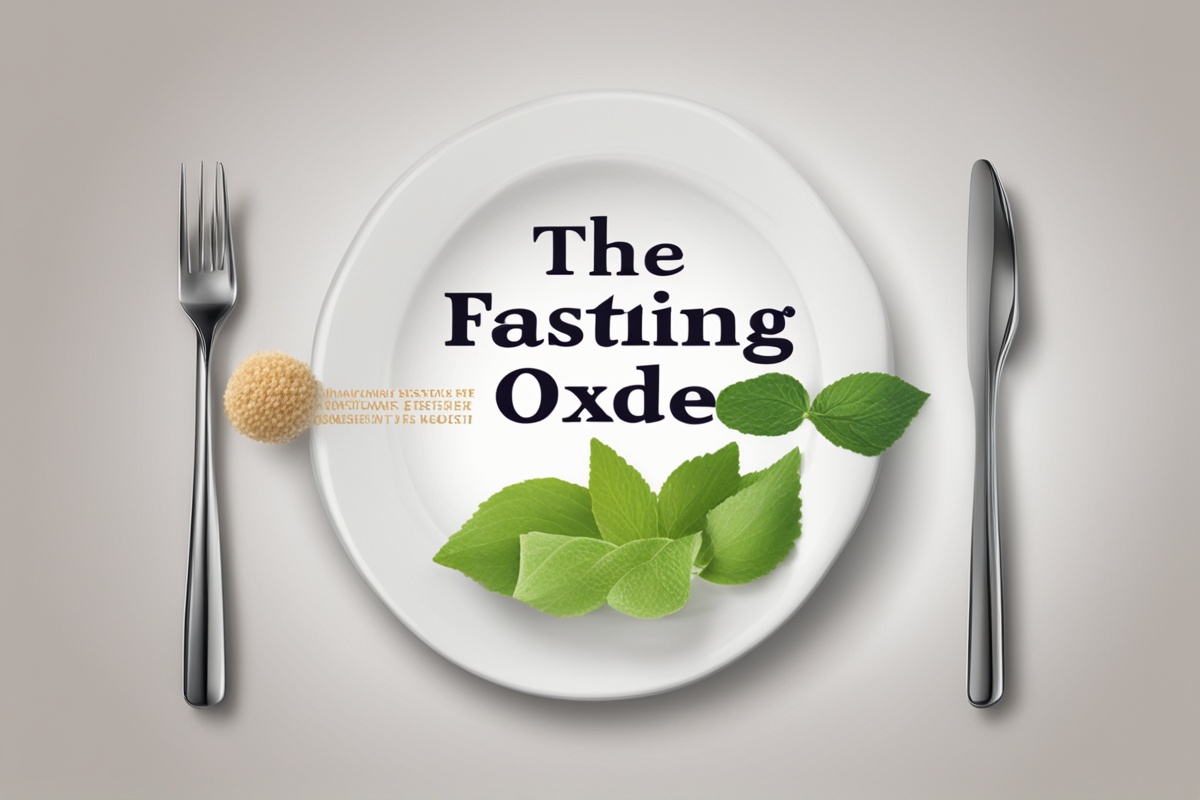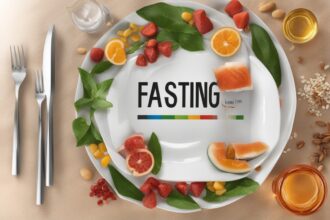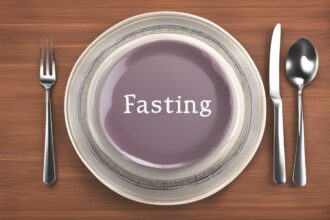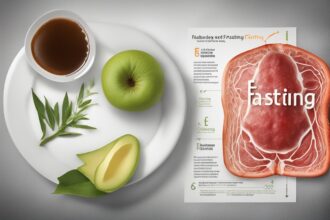Hey there, fellow health enthusiasts! If you’ve been searching for a fasting guide that dives deep into the science of fasting and its impact on your body, you’re in the right place. Today, we’re exploring a fascinating topic: how fasting can combat oxidative stress, a sneaky culprit behind aging and chronic diseases. I’ve been intrigued by fasting for years, experimenting with different methods and poring over research to understand its benefits. Oxidative stress might sound like a complex term, but don’t worry—I’ll break it down in a way that’s easy to grasp, with practical tips to incorporate fasting into your life. Let’s unpack the connection between fasting and oxidative stress, backed by science, and see how this powerful practice can boost your wellness.
What Is Oxidative Stress, and Why Should You Care?
Let’s start with the basics. Oxidative stress happens when there’s an imbalance between free radicals (unstable molecules that can damage cells) and antioxidants (the body’s defense system) in your body. Think of free radicals as tiny wrecking balls—they’re produced during normal processes like metabolism or from external factors like pollution and poor diet. When they outnumber antioxidants, they can harm cells, proteins, and DNA, contributing to aging, inflammation, and diseases like cancer or heart disease (Halliwell, 2007). It’s a silent threat, and many of us don’t even realize it’s happening until symptoms show up.
Here’s where a solid fasting guide comes in handy. Research suggests that fasting can help reduce oxidative stress by giving your body a break from constant digestion and energy production, which are major sources of free radicals. By limiting food intake for specific periods, you might just lower the damage and support your body’s natural repair mechanisms. Intrigued? Let’s dive deeper into how fasting works its magic.
How Fasting Impacts Oxidative Stress: The Science Explained
Fasting, whether it’s intermittent fasting (IF), time-restricted eating, or longer water fasts, triggers some pretty cool changes in your body. When you fast, your body shifts from using glucose (from food) as its primary fuel to burning stored fats through a process called ketosis. This metabolic switch doesn’t just help with weight loss—it also reduces the production of free radicals. Studies show that fasting lowers markers of oxidative damage, like lipid peroxidation, while boosting antioxidant defenses (Johnson et al., 2007).
Moreover, fasting activates autophagy, a cellular “cleanup” process where damaged components are recycled. This reduces the burden of oxidative stress by clearing out dysfunctional cells that could otherwise contribute to inflammation (Levine & Kroemer, 2008). I’ve found that even short fasts, like skipping breakfast for a 16:8 intermittent fasting plan, leave me feeling more energized—likely a sign of my body getting a chance to reset. If you’re new to this, don’t worry; this fasting guide will walk you through starting safely.
Key Benefits of Fasting for Reducing Oxidative Stress
Now that we’ve covered the science, let’s talk about why fasting is worth considering as part of your health toolkit. Reducing oxidative stress isn’t just about preventing damage—it’s about promoting longevity and vitality. Here are some standout benefits I’ve come across in my research and personal journey with fasting:
- Enhanced Antioxidant Production: Fasting can upregulate your body’s natural antioxidants, like glutathione, which neutralize free radicals (Mattson & Wan, 2005).
- Lower Inflammation: Oxidative stress often fuels chronic inflammation; fasting helps by reducing pro-inflammatory markers.
- Improved Cellular Health: Through autophagy, fasting clears out damaged cells, reducing the oxidative load.
- Protection Against Chronic Diseases: Less oxidative stress means a lower risk of conditions like diabetes and cardiovascular issues (Harvie et al., 2011).
These benefits make fasting a powerful ally. Whether you’re following a beginner’s fasting guide or you’re a seasoned pro, the impact on oxidative stress is a game-changer.
Practical Tips to Start Fasting and Combat Oxidative Stress
Ready to give fasting a try? I’ll be honest—it can feel daunting at first. I remember my initial 16:8 fast; the hunger pangs were real! But with a few strategies, it gets easier. Here’s a practical fasting guide with tips to help you start while maximizing benefits for oxidative stress reduction:
- Start Small: If you’re new, try a 12:12 schedule (12 hours fasting, 12 hours eating) before moving to 16:8 or longer fasts.
- Stay Hydrated: Drink plenty of water during fasting windows to support detoxification and reduce stress on your body.
- Focus on Nutrient-Dense Foods: When you eat, prioritize antioxidant-rich foods like berries, leafy greens, and nuts to complement fasting’s effects.
- Avoid Overeating: Breaking a fast with a huge meal can spike oxidative stress, so ease back into eating with small portions.
- Listen to Your Body: If you feel dizzy or overly fatigued, take a break—fasting should feel sustainable, not punishing.
These tips helped me ease into fasting, and I’ve noticed clearer skin and better focus, which I attribute partly to reduced oxidative stress. Pair these with a healthy lifestyle, and you’ve got a winning combo.
Potential Risks and How to Avoid Them
While fasting offers impressive benefits, it’s not a one-size-fits-all solution. I’ve learned through trial and error that pushing too hard can backfire. For instance, prolonged fasting without proper preparation might increase oxidative stress temporarily due to elevated cortisol levels (Steinhauser et al., 2018). It’s also not suitable for everyone—pregnant women, those with eating disorders, or individuals with certain medical conditions should consult a doctor first.
To keep fasting safe and effective as per this fasting guide, ease into it gradually and monitor how you feel. Avoid extreme calorie restriction outside fasting windows, as it can deplete antioxidant stores. I always keep a journal to track my energy levels and mood during fasts—it’s a simple way to spot any red flags early. Balance is key; fasting should enhance your health, not stress your system.
Fasting Methods to Suit Your Lifestyle
One thing I love about fasting is its flexibility. Whether you’re a busy professional or a stay-at-home parent, there’s a method that fits. As part of this fasting guide, let’s explore popular fasting styles that can help tackle oxidative stress. Pick one that aligns with your routine, and remember to start slow. I started with intermittent fasting because it felt manageable with my schedule, and over time, I’ve experimented with others. The key is consistency over intensity—find what works for you and stick with it.
Below is a brief rundown of fasting types I’ve tried or researched. Each has unique benefits for reducing oxidative stress, so consider your goals and lifestyle when choosing. If you’re curious about more detailed plans, check out other resources on our site for a complete fasting guide for beginners or advanced tips.
Studies and Surveys on Fasting and Oxidative Stress
Let’s take a quick detour to look at some compelling research that backs up fasting’s role in combating oxidative stress. A 2019 study published in Cell Metabolism explored how intermittent fasting influences oxidative damage in animal models. The researchers found that fasting cycles significantly reduced markers of oxidative stress, such as malondialdehyde, while increasing antioxidant enzyme activity. This suggests a protective effect at the cellular level, potentially translatable to humans (de Cabo & Mattson, 2019).
Additionally, a small human trial conducted in 2013 examined overweight adults practicing alternate-day fasting. The results, published in Obesity, showed a notable decrease in oxidative stress biomarkers after eight weeks, alongside improvements in insulin sensitivity. Participants also reported feeling more energetic, hinting at broader wellness benefits (Varady et al., 2013). These studies highlight why fasting is gaining traction as a tool for cellular health, reinforcing the insights in this fasting guide.
Alright, back to the main discussion. Whichever fasting style you choose, remember that the goal is to reduce oxidative stress while maintaining overall well-being. Don’t hesitate to tweak your approach as you learn what your body responds to best.
In wrapping up this fasting guide, I hope you’re as excited as I am about the potential of fasting to combat oxidative stress. It’s not just a trend—it’s a science-backed strategy to support cellular health, reduce inflammation, and possibly extend your lifespan. From my own experience, fasting has been a journey of trial and error, but the clarity and energy I’ve gained are worth it. Start small, stay consistent, and always prioritize balance. Whether you’re dipping your toes into intermittent fasting or exploring longer fasts, you’re taking a step toward a healthier you. Got questions or personal fasting stories? Drop them in the comments—I’d love to hear how this powerful tool is working for you!
References
- Cell Metabolism, 30(6), 1012-1031.
- Halliwell, B. (2007). Oxidative stress and cancer: Have we moved forward? Biochemical Journal, 401(1), 1-11.
- Harvie, M. N., Pegington, M., Mattson, M. P., et al. (2011). The effects of intermittent or continuous energy restriction on weight loss and metabolic disease risk markers. International Journal of Obesity, 35(5), 714-727.
- Johnson, J. B., Summer, W., Cutler, R. G., et al. (2007). Alternate day calorie restriction improves clinical findings and reduces markers of oxidative stress. Free Radical Biology and Medicine, 42(5), 665-674.
- Levine, B., & Kroemer, G. (2008). Autophagy in the pathogenesis of disease. Cell, 132(1), 27-42.
- Mattson, M. P., & Wan, R. (2005). Beneficial effects of intermittent fasting and caloric restriction on the cardiovascular and cerebrovascular systems. Journal of Nutritional Biochemistry, 16(3), 129-137.
- Steinhauser, M. L., Olenchock, B. A., O’Keefe, J., et al. (2018). The circulating metabolome of human starvation. JCI Insight, 3(16), e121434.
- Varady, K. A., Bhutani, S., Klempel, M. C., et al. (2013). Alternate day fasting for weight loss in normal weight and overweight subjects: A randomized controlled trial. Obesity, 21(11), 2258-2264.






